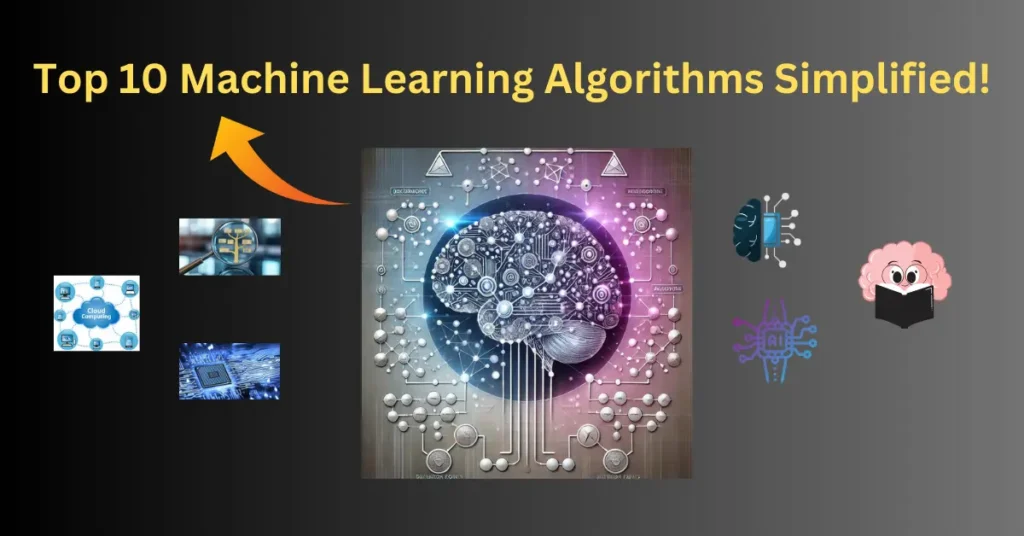
Machine learning (ML) is at the heart of artificial intelligence, powering applications ranging from voice assistants to recommendation systems. Whether you’re a beginner or an experienced data scientist, understanding the foundational algorithms is crucial. In this blog, we’ll explore the top 10 machine learning algorithms, breaking down their concepts and applications in a simple, digestible manner.
Linear Regression
What It Is: A supervised learning algorithm used for predicting a continuous output variable based on one or more input variables.
How It Works: It finds the best-fit line by minimizing the sum of squared differences between actual and predicted values.
Applications: House price prediction, sales forecasting, and market trends analysis.
Logistic Regression
What It Is: A supervised learning algorithm used for binary classification problems.
How It Works: It uses the sigmoid function to map predictions to probabilities between 0 and 1.
Applications: Spam email detection, credit risk analysis, and customer churn prediction.
Decision Trees
What It Is: A supervised learning algorithm that splits data into subsets based on feature values, forming a tree structure.
How It Works: At each node, the algorithm chooses the best feature to split the data to maximize information gain.
Applications: Loan approval, fraud detection, and recommendation systems.
Random Forest
What It Is: An ensemble method combining multiple decision trees to improve accuracy and prevent overfitting.
How It Works: Each tree votes, and the majority decision becomes the output.
Applications: Stock market prediction, healthcare diagnostics, and image recognition.
Support Vector Machines (SVM)
What It Is: A supervised learning algorithm used for classification and regression tasks.
How It Works: It finds the hyperplane that best separates data points of different classes.
Applications: Text classification, face detection, and bioinformatics.
K-Nearest Neighbors (KNN)
What It Is: A supervised learning algorithm that classifies data points based on the majority class of their nearest neighbors.
How It Works: It calculates the distance between data points to identify neighbors.
Applications: Recommendation systems, pattern recognition, and medical diagnostics.
Naïve Bayes
What It Is: A probabilistic classifier based on Bayes’ theorem, assuming feature independence.
How It Works: It calculates the probability of a class given the features and selects the class with the highest probability.
Applications: Spam filtering, sentiment analysis, and document categorization.
K-Means Clustering
What It Is: An unsupervised learning algorithm used for clustering data into groups.
How It Works: It iteratively assigns data points to clusters and recalculates the cluster centroids.
Applications: Customer segmentation, market research, and image compression.
Principal Component Analysis (PCA)
What It Is: A dimensionality reduction technique used to simplify data while retaining its most important features.
How It Works: It identifies the principal components that explain the most variance in the data.
Applications: Data visualization, noise reduction, and feature extraction.
Gradient Boosting Algorithms (e.g., XGBoost, LightGBM)
What It Is: An ensemble method that builds models sequentially, correcting errors of previous models.
How It Works: Each tree focuses on minimizing the error of the previous tree.
Applications: Predictive analytics, competition-winning solutions, and financial modeling.
Why These Algorithms Matter
These algorithms form the backbone of machine learning. Understanding them equips you to tackle diverse real-world problems effectively. Depending on the dataset, problem type, and performance requirements, one or more of these algorithms can be your best choice.